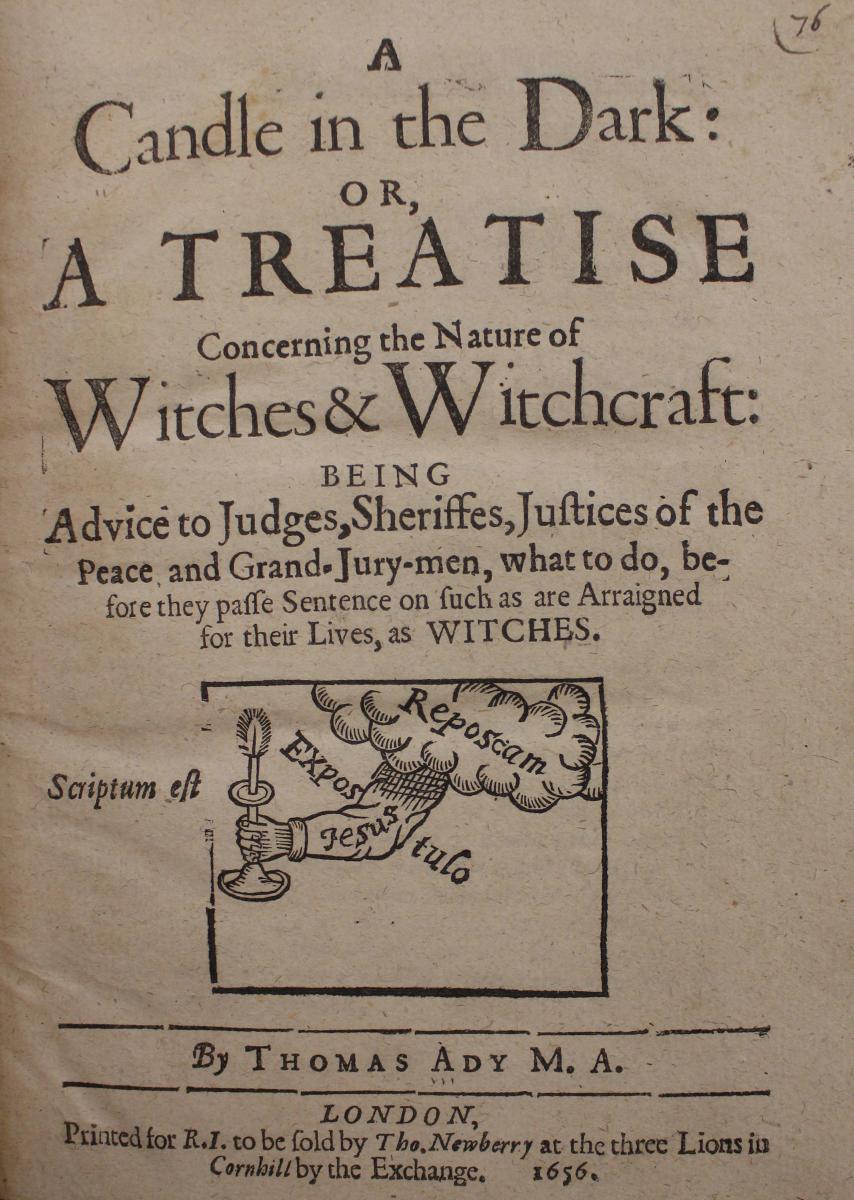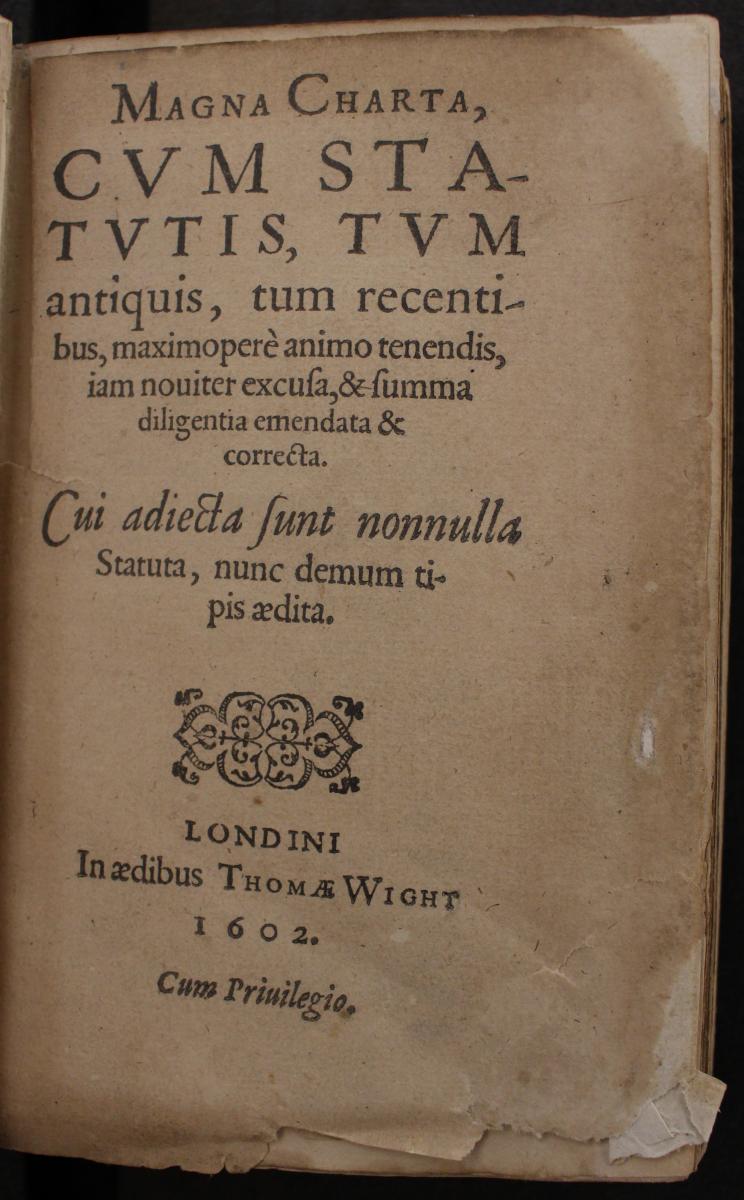Law and Order
Law, particularly English law, have several key examples at UNL, including discussions of English common law (integral influence on American legal processes), witchcraft, and the Magna Carta. This is very useful for students and community members alike, given the preeminent law program at UNL.
Francis Bacon (1561-1626)
The elements of the common laws of England : branched into a double tract : the one containing a collection of some principal rules and maxims of the common law, with their latitude and extent, explicated for the more facile introduction of such as are studiously addicted to that noble profession : the other the use of the common law, for preservation of our persons, goods, and good names, according to the laws and customs of this land / by the late Sir Francis Bacon ..
London : Printed by J. More, esq., and are to be sold by Anne More, and Henry Hood, 1636
Adoption Price: $50
ADOPTED!
Sir Charles Calthrope (d. 1616)
The relation between the lord of a manor and the copy-holder his tenant.
London, Printed for W. Cooke, 1635
Description: It is not known when Charles Calthrope was born, but it was probably around 1540. He served as a lawyer in Ireland, and seems to have been politically controversial. Nevertheless, he ended with a good position and salary. He was an English lawyer who was involved in collecting taxes for the Queen, and perhaps needed to clarify legal rights in matters of land ownership and tenancy. This little book is the work of a lawyer, clarifying the rules of relationship between the lord of a manor and his tenant. It includes some information on women’s roles in the relationship. This book is about 8” x 6” and perhaps 1/3” thick, with plain page edges. It is reddish brown, dark on the spine binding and corners, and light and bubbly on the main part of the cover. It has six sections up the spine, divided by gold cross rules but not ridges. It has 99 pages, plus a short Errata notice on what would be page 100. There is a blank leaf or two at the front (the first perhaps stuck to the inside of the front cover), and two at the back. There is a title page, with illegible initials at the top, a small up-and-down scribble at the upper right, with a c/f printed nicely just down and right from it. There is considerable notation inside by the Library, including it’s catalog number, a stamped 353349, etc. The book is divided into several Lectures. Pages are numbered at the top center, in parentheses. The second page is numbered (44). In the text, proper names and book titles are italicized. There is some water staining and wear. Key paragraphs are marked by penciled ‘X’s, as if used by a student. It has some notes and underlined words, seemingly corrected or translated to a different word. Despite its small size, the margins are wide, leaving the text about 6” x 3 1/2”. There are catchwords and quire numbers. The left page is an even number, the right page is odd. -- Rory Larson
Adoption Price: $25
ADOPTED!

Thomas Ady
A candle in the dark: or, a treatise concerning the nature of witches and witchcraft : being advice to judges, sheriffs ... what to do, before they passe sentence on such as are arraigned for their lives, as witches
London : R. I[bbitson], sold by T. Newberry, 1656
Adoption Price: $50

Laws of England and Wales
Magna Charta, cum statutis, tum antiquis, tum recentibus, maximoperè animo tenendis, iam nouiter excusa, & summa diligentia emendata & correcta. Cui adiecta sunt nonnulla statuta, nunc demum tipis aedita
London: In aedibus Thomae Wight, 1602
Description:Originally created in 1215 as a means to subdue the person and unpopular policies of King John of England (r.1199-1216), Magna Charta is a foundational and inspirational document in the governments of the United Kingdom, the United States and others across the globe. It was sealed, not signed, by King John in the field of Runnymede just outside of Windsor on 15 June 1215. This particular edition was printed by Thomas Wight in London in 1602 and is conveniently pocket-sized for whenever you may need to settle a pub debate on which clause is the one that said something about debts to Jews (helpful hint, that’s clauses 10 and 11) or when you would like to brush up on your medieval Latin. This particular volume contains the full text of Magna Charta in its original glorious Latin along with other English statues which date from the same time in French and English. This handy pocket-sized compendium has been rebound from its original early seventeenth century binding for a sturdier experience and also sports tiny pin-prick holes on several pages starting with 65. Thomas Wight was a well-known and respected book seller and publisher in London who originally worked with his father, John Wight. His particular publishing interest was law books. In addition to printing and selling books, Wight was also a draper, or cloth merchant, in the City of London, and was a member of the Drapers’ Company. -- Courtney Herber
Adoption Price: $100